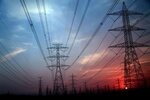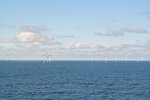News Release from Siemens AG
Wind Industry Profile of
Demand for electricity will double by 2060
"This means that bringing resources, assets and people closely together in a digital world is an absolute must." At the opening event of the foremost international energy forum, Meixner described the challenge posed by achieving an affordable, dependable and clean energy supply which would create an absolute minimum of CO2 emissions. Meixner discussed with prominent representatives of companies and organizations, including the International Energy Agency and the World Wide Fund For Nature (WWF), the question of "Scenarios 2060: The Grand Transition".
More than 55 countries have now ratified the agreement reached at the Paris World Climate Summit. This treaty involves a catalog of measures designed to bring about a substantial reduction in CO2 emissions. The objective of the World Climate Summit is to limit global warming to well below 2°C. In addition to achieving the climate targets, a further goal is to make access to energy sources available to as many people as possible. At present around one billion people have no access to electricity; this seriously inhibits their long-term prospects as far as education and development are concerned. Furthermore, according to United Nations estimates, the global population is set to increase to some 9.5 billion by the middle of this century. Meixner outlined the challenge: "If we are to ensure a reliable supply of affordable electric energy for the world's population in years to come, then over the next 35 years we have to integrate three times the energy consumption of China into our energy world."
The growing demand for efficiently generated power will lead to a significant expansion of global capacities. Siemens has calculated that by the year 2030 decentralized energy systems will account for almost one half of the additionally required capacities. In global terms, wind and solar power will play a prominent role in this scenario, since the cost of electricity generated from renewables has been reduced as a result of government intervention. Thus, installed capacities have increased significantly since the last WEC in 2013. The cost of photovoltaic energy fell by 7 percent annually between the year 2000 and 2015. As for offshore wind power, prices are expected to fall by one-third between 2015 and 2020.
However, the expansion of renewable energy alone will not be sufficient. Meixner stresses: "In view of this increasing demand, we will only attain the goals we have set ourselves by gradually converting the existing power plants from coal to gas. If we were able to change things and turn all the world's coal-fired plants into gas-fired plants, we would reduce the amount of CO2 emissions by 40 percent."
This type of structural change is also advantageous from an economic point of view. Experts assume that the price of gas will remain at the present low level until at least the year 2025. At the same time, the use of liquefied natural gas (LNG) means that people living in regions which are inaccessible by pipeline can have gas as their source of energy. Unconventional gas has immense potential to further change the conventional energy mix. In the United States this has already led to record utilization levels among the installed fleet of Siemens gas turbines.
Expansion of the existing energy distribution networks into smart grids is essential in order to integrate all sources of energy. Only in this way can the flow of energy in several directions be controlled and fluctuations in supply balanced out by tapping into reserves of stored energy. Here, too, Siemens has been playing a pioneering role. For example, Siemens is constructing a photovoltaic biofuel hybrid power plant on Isabela, the largest of the Galapagos Islands. This project comprises a photovoltaic system, a dual fuel system that can be operated with Jatropha oil and diesel fuel, and an energy storage system for 3.3 megawatt hours.
At the WEC, Siemens is presenting a number of technical papers dealing with the subject of futureproof energy supplies. In his award-winning paper, Patrice Bardon from Siemens Dresser-Rand business explains how a configurator determines the correct drive unit in LNG plants. The configurator enables plant operators to select the most efficient drive unit for their own specific process. It analyzes steam, industrial and aeroderivative gas turbines and electric motors. The background: liquefying natural gas is an energy- and cost-intensive process. Liquefaction accounts for between 30 and 40 percent of the total cost of LNG.
Zafer Gursoy of Siemens Turkey is giving a presentation on technology for large gas turbine power plants, focusing on issues of environmental compatibility and the conservation of resources. He elaborates this on the basis of the Lausward combined cycle power plant and using the example of a mega project in Egypt, where Siemens is currently constructing three combined cycle power plants with a rating of 4.8 gigawatts each. In a further presentation, Howard Gooder of Siemens Financial Services explains how public institutions – in conjunction with private enterprises – are investing in clean energy projects based on wind, photovoltaic and natural gas and thus helping to achieve the goals of the Paris Climate Agreement.
- Source:
- Siemens
- Link:
- www.siemens.com/...
- Keywords:
- electricity, demand, Siemens, Istandbul, energy, congress























